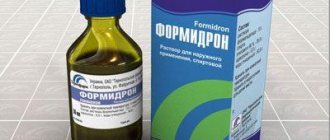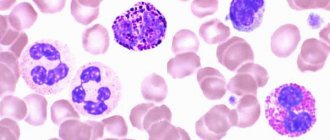The drug Clonidine, the effect of this drug on humans is well known. The drug has been used for more than a year in medicine and, unfortunately, in criminal activities.
In the 1960s, a new substance was synthesized - clonidine. Clonidine is available under different trade names, Clonidine being the best known. Belongs to a group of drugs with antihypertensive effects.
It was originally planned that the drug would become an effective treatment for the common cold. The active ingredient relieves vasospasm and makes breathing easier. Over time, clonidine was found to markedly lower blood pressure and induce sleep.
Fraudsters began to use this for criminal purposes. Why do clonidine specialists mix it into drinks and how long does it take for clonidine to start working?
Pharmacodynamics and pharmacokinetics
What is Clonidine? The active substance, clonidine , is a central alpha-adrenergic agonist. The mechanism of action is based on stimulation of postsynaptic alpha-2 adrenergic receptors located in the vasomotor center in the medulla oblongata, reducing the flow of sympathetic impulses at the presynaptic level to the heart and blood vessels. The drug reduces heart rate, reduces IOC, TPR. The drug has a central effect. With rapid intravenous infusion, a short-term decrease in blood pressure is recorded, caused by stimulation of postsynaptic alpha1-adrenergic receptors located in the walls of blood vessels. Clonfelline reduces blood flow in the brain, increases the tone of cerebral vessels, increases renal blood flow, and has a pronounced sedative effect. The drug is effective for 6-12 hours. When clonidine is instilled into the conjunctival sac, a drop in intraocular pressure is observed. The effect is explained by stimulation of adrenergic receptors upon local contact, which leads to a decrease in the production of intraocular fluid, improvement of its outflow, and weakening of sympathetic tone.
Description of the drug
Clonidine is an antihypertensive agent that affects the mechanisms of blood pressure adjustment. The medication has a strong sedative effect and reduces the manifestations of alcohol abstinence.
Long-term or short-term exposure to the body may result in the following effects:
- The systematicity of myocardial contractions is significantly reduced. This reduces blood pressure.
- The dynamic functioning of the nervous system decreases. This affects the feeling of sleepiness. The medication has a sedative effect.
- The pressure level of the eyeball is significantly reduced.
- Sleeping pills have a good analgesic effect due to their strong central nervous system suppression.
- The medicine has a good effect on patients who are experiencing opiate withdrawal syndrome. There is an elimination of symptoms such as anxiety, fear, and tension. The medication also helps reduce disorders in the functioning of the heart muscle.
Important! Taking sleeping pills has an effect within 15 minutes after using the drug.
25-30 minutes after taking the medication, a drop in blood pressure is noted. The medicinal effect can last up to 12 hours.
Indications for use
Clonidine - what is it for? It is used for hypertensive crisis , for arterial hypertension (including kidney pathology), for pheochromocytoma (for diagnosis), for acute myocardial infarction (if symptoms of cardiogenic shock are not diagnosed), for dysmenorrhea , headaches of vascular origin, for withdrawal syndrome in patients with drug addiction (complex treatment), Gilles de la Tourette syndrome, nicotine addiction. Clonidine eye drops are used for primary open-angle glaucoma.
Side effects of Clonidine
Digestive tract: loss of appetite, dry mouth, decreased secretion of gastric juice, constipation , vomiting, nausea.
Nervous system: “nightmare”, vivid dreams, depression, nervousness, anxiety, slower speed of motor and mental reactions, drowsiness, asthenia .
Cardiovascular system: short-term decrease in blood pressure during intravenous infusion, orthostatic hypotension, bradycardia.
Side effects from the genitourinary system: decreased libido, impaired potency. It is possible to develop a “hemitonic crisis” with abrupt discontinuation of the drug, swelling of the ankles, and Raynaud’s syndrome .
When using eye drops topically, there is a burning sensation in the eyes and dryness of the conjunctiva. The most common systemic reactions are: bradycardia, constipation, drowsiness.
Clonidine, instructions for use (Method and dosage)
The tablets are taken orally, regardless of meals. The initial dosage is 0.075 mg three times a day. If necessary, the dosage is increased to 0.9 grams per day.
Elderly patients with concomitant atherosclerosis are prescribed 0.0375 three times a day.
The drug is withdrawn gradually over two weeks.
Dysmenorrhea: 14 days before menstruation, as well as during the cycle, take 0.025 mg twice a day.
For hypertensive crisis, the medicine is used sublingually, intramuscularly, or intravenously at a dose of 0.15 mg. Before jet intravenous infusion, the drug is dissolved in sodium chloride and administered for 10 minutes.
According to the instructions for use, Clonidine eye drops are instilled 2-4 times a day into each conjunctival sac, 1-2 drops. Therapy begins with the use of a 0.25% solution. If the required level of intraocular pressure is not achieved, a 0.5% solution is used. When significant side effects are registered, the concentration of the solution is reduced to 0.125%.
Clonidine
Clonidine (Clophelinum) is one of the antihypertensive drugs used to lower blood pressure (BP).
Active substance
The active substance in Clonidine is Clonidine hydrochloride (Clonidini hydrochloridum) or 2,6-dichloro-N-2-imidazolidinylidenebenzenes.
Clonidine belongs to the group of imidazoline derivatives, and has the chemical formula C9H9Cl2N3.
According to physical properties, it is a white crystalline powder. It is highly soluble in water, but poorly soluble in organic solvents: ethyl alcohol, chloroform, and ether.
Mechanism of action
This is an antihypertensive drug with a central mechanism of action. Its ability to lower blood pressure is associated with its effect on certain brain structures, namely the vasomotor center of the medulla oblongata.
Here are neurons, impulses from which lead to an increase in blood pressure by spasm of peripheral small arteries (arterioles). These neurons are elements of the sympathetic nervous system. In this way, the sympathetic system realizes its hypertensive effect aimed at increasing blood pressure.
In addition, under the influence of sympathetic impulses, the frequency and strength of heart contractions increases, which also leads to an increase in blood pressure. The conduction of these impulses through synapses (contacts between neurons) is ensured by norepinephrine. Clonidine does not affect the synthesis of norepinephrine in presynaptic (located in front of the synapse) neurons.
But under its influence, the reserves of norepinephrine in presynaptic neurons are quickly depleted. This mechanism is realized due to its effect on alpha-2 adrenergic receptors in the central neurons of the vasomotor center.
As a result, the release of norepinephrine is inhibited, the inhibitory neurons of the vasomotor center are activated, and the conduction of sympathetic impulses to the vessels is blocked.
In a similar way, it inhibits the synthesis of adrenaline in the adrenal medulla. Adrenaline, like norepinephrine, belongs to the group of catecholamine substances that play an important role in the development of hypertension. In addition, under its emission, the vagus nerve, which belongs to the parasympathetic nervous system, is activated.
This part of the autonomic nervous system is an antagonist of the sympathetic system with directly opposite effects, including hypotension. Its hypotensive effect is manifested by expansion of the lumen of arterioles, a decrease in their peripheral resistance, and a decrease in the frequency and strength of heart contractions.
The last factor is associated with the elimination of myocardial hypertrophy during long-term use of the drug, because the load on the heart muscle is reduced.
Clonidine hydrochloride owes its central action to its ability to penetrate the BBB (blood-brain barrier) between the blood and the brain matter. The effect on brain structures, in addition to hypotension, also manifests itself in other effects.
First of all, it is analgesia - pain relief. Analgesia is achieved through inhibition of central sensitive pain receptors - nociceptors. It potentiates, enhances anesthesia. Therefore, it can be used as an adjuvant (auxiliary) agent during general anesthesia.
In addition, under its influence, sedation develops - calmness, disappearance of anxiety and fear. By influencing nociceptive structures, it is able to reduce the severity of withdrawal syndrome caused by alcohol abuse and the use of various narcotic substances, incl. and opiates.
However, it does not bind to opiate receptors, and addiction does not develop to it. There is evidence of its effect on the thermoregulation centers of the brain, resulting in a decrease in high temperature. However, the antipyretic power of the drug is small.
Among the peripheral effects of Clonidine is an improvement in renal blood flow due to dilation of the renal arteries during hypotension, as well as a decrease in IOP (intraocular pressure). The decrease in IOP is due to a decrease in the production of intraocular fluid and an improvement in its outflow due to sympathetic blockade.
It stimulates not only central alpha-2 adrenergic receptors, but also peripheral alpha-1 adrenergic receptors in arterioles, which leads to their spasm. In this case, short-term hypertension develops, which is then replaced by hypotension.
This two-phase effect on blood pressure is more typical for injection forms, and is practically not observed when using tablets. Large jumps in blood pressure are extremely undesirable for patients with myocardial infarction and cerebrovascular accident.
It should be borne in mind that Clonidine, penetrating the BBB, can cause cerebral vasospasm. The feeling of dry mouth is also associated with its stimulation of peripheral adrenergic receptors.
Over time, addiction develops to it, manifested in a decrease in antihypertensive activity and the need to increase doses. There is evidence that long-term use, especially in elderly patients, can lead to senile dementia - Alzheimer's disease.
Interesting Facts
It is known to many not only as a medicine. It gained its notorious fame thanks to its widespread use in criminal practice. In this regard, songs, publications, and feature films are named after him.
Its use for evil purposes is based on its hypotensive and sedative effects, which are enhanced in combination with alcohol. After all, alcohol initially dilates cerebral vessels, and Clonidine penetrates the BBB better and in greater quantities.
As a result of a rapid drop in blood pressure, depression of consciousness and a decrease in cardiac activity, “the client passes out.” This condition has varying degrees of severity, including death.
It is especially difficult to take liquid forms in combination with alcohol. Unlike tablets, liquid Clonidine (injection solution, eye drops) dissolves better in ethyl alcohol.
History of creation
It was synthesized in the 60s of the last century. At first it was planned as a remedy for the common cold due to its peripheral adrenergic stimulating effect and the ability to spasm the capillaries of the nasal mucosa. However, its hypotensive properties were immediately noted.
It was used as an antihypertensive drug for several decades in the USSR and abroad. The peak of its popularity was in the late 70s and early 80s. It was often combined with other drugs - Raunatin, Octadine, Reserpine, which were widely used in those days to treat arterial hypertension.
Subsequently, its use decreased sharply, and its injectable form practically disappeared from the pharmacy chain. This is due to the criminal component, but only partly.
Further use was limited by its hemodynamic and central nervous system side effects. In addition, progressive methods of treating hypertension have been developed using new, more effective drugs.
Currently, its tablets are rarely used, mainly when it is necessary to lower blood pressure in a short time.
Synthesis technology
Clonidine hydrochloride is produced through chemical reactions involving one or more biodegradable polymers. In addition to the main active substance, the following are used in the production of solid tablet forms: lactose, magnesium stearate, corn starch. These substances act as fillers.
Release forms
- extended-release tablets 0.000075 g (75 mcg) and 0.00015 g (150 mcg);
- Ampoules 1 ml 01% solution for injection;
- Tube droppers 1.5 ml of 0.125%, 0.25% and 0.5% solution in the form of eye drops.
It is produced under the names Clonidine and Clonidine (Apo-Clonidine, Clonidine-M) by many pharmaceutical companies in Russia and Ukraine.
In addition to Clonidine, other generics have been and are used in the USSR and Russia, in which Clonidine acts as the active ingredient:
- Catapresan – tab., solution for injection, Boehringer Ingelheim (Germany), Zdravle (Yugoslavia);
- Chlofazolin – tab., Farmakhim (Bulgaria);
- Barklid – tab., Biogalenika Laboratory, France;
- Gemiton – tab., AVD, Germany.
The weight of tablets and the concentration of the injection solution are the same for all generics. The quality of foreign medicines is better, but they are more expensive than their Russian counterparts.
Along with Clonidine, other centrally acting antihypertensive drugs are also used in medical practice. These are Rilmenidine (Albarel, Hyperdix), Moxonidine (Tensotran, Physiotens). Since the active ingredients in these drugs are different, they differ in their characteristics and mechanism of action from Clonidine.
Dosages
75 mcg is prescribed orally 2-4 times a day. If necessary, the dose is gradually increased by 37.5 mcg every 1-2 days, bringing it to 150-300 mcg per dose 3-4 times.
In some cases, the daily dose can be increased to 300-450 mcg. A further increase in dose is hardly justified. In these situations, it is recommended to combine Clonidine with diuretic drugs-saluretics.
The injection solution is administered intramuscularly, subcutaneously and intravenously. 0.5-1.5 ml is injected intramuscularly and subcutaneously. When administered intravenously, this amount is diluted in 10-20 ml of saline, and in order to avoid a rise in blood pressure, it is administered slowly over 3-5 minutes. At this time and 1.5-2 hours after administration, the patient should lie down, because collapse is possible.
Eye drops are instilled into the conjunctival sac, 1-2 drops 2-4 times a day. Start with a 0.25% solution. If the reduction in IOP is insufficient, switch to a 0.5% solution, and in case of side effects, switch to a 0.125% solution.
Treatment with tablets is carried out for a long time, for 6-12 months. You should not immediately cancel KGO - there may be a deterioration in the condition, an increase in blood pressure and hypertensive crises. Therefore, 7-10 days before stopping treatment completely, it is recommended to gradually reduce the dose, replacing it with other antihypertensive drugs.
Pharmacodynamics
The hypotensive effect develops 1-2 hours after oral administration, 15-20 minutes after intravenous administration, and lasts 6-8 hours. It is quickly absorbed into the gastrointestinal tract. Bioavailability is 65%, but can reach 100%.
The maximum concentration in blood plasma is formed 1.5-2.5 hours after ingestion. 20-40% of Clonidine ingested is bound to plasma proteins.
In the liver, 50% of it undergoes metabolic transformations. Excreted by the kidneys (40-60%) and through the intestines (20%). The half-life is 12-16 hours, but if renal function is impaired, it can increase to 41 hours.
Indications
- Arterial hypertension – primary, renal, hypertensive crises;
- Alcohol and drug withdrawal;
- Open-angle primary glaucoma (eye drops).
Side effects
- Cardiovascular system: hypotension, rarely – bradycardia, edema syndrome;
- Central nervous system: dizziness, weakness, drowsiness, nervousness, depression, paresthesia, slowing of mental and motor reactions;
- Eyes: dry conjunctiva, burning and itching in the eyes;
- Skin: allergic rash, itching;
- ENT organs: nasal congestion;
- Reproductive system: erectile dysfunction, decreased libido.
Contraindications
- Individual intolerance to Clonidine;
- Hypotension, shock, collapse;
- Sinus bradycardia (heart rate less than 50 beats/min);
- Second degree atrioventricular block;
- Sick sinus syndrome;
- Depressive states;
- Obliterating endarteritis;
- Atherosclerosis of cerebral vessels.
Its use is contraindicated when performing work that requires quick motor reactions, including while driving vehicles and working with complex, potentially dangerous machines and mechanisms.
Interaction
- Beta-blockers, Captopril - sudden withdrawal of Clonidine leads to a sharp increase in blood pressure;
- Hormonal contraceptives - enhance the sedative effect of Clonidine;
- Calcium channel blockers – conduction disturbances in the myocardium;
- Tricyclic antidepressants – reducing the hypotensive effect;
- Levodopa, Piribedil - decreased antiparkinsonian effect of these drugs;
- Prazosin – a violation of the hypotensive effect of Clonidine;
- Propranolol, Atenolol - increased hypotensive effect, dry mouth, sedation;
- Cyclosporine - increasing the concentration of this drug in the blood plasma;
- Ethyl alcohol – severe hypotension, toxic damage to the central nervous system.
Pregnancy and lactation
Clonidine is able to penetrate the placental barrier and into breast milk. This can cause negative changes in the cardiovascular system and central nervous system in the fetus. Therefore, it is contraindicated during pregnancy and during breastfeeding.
Storage
Store at a temperature not exceeding 250C. Shelf life: tablets - 4 years, ampoules - 3 years, tube droppers - 2 years. The drug is not dispensed without a doctor's prescription.
Overdose
Manifested by slowing of atrioventricular conduction, decreased blood pressure, collapse, respiratory depression, impaired consciousness, widening of the QRS complex on the ECG, early repolarization syndrome , hypothermia, miosis, lethargy. Therapy is carried out syndromic.
Symptoms of poisoning with a substance: immersion in deep sleep or coma, depressed consciousness, blood pressure and pulse drop very strongly, mental disorder.
The lethal dose of Clonidine for humans is 50-100 mcg per kg of weight.
Clonidine and alcohol
Clonidine is soluble in water. It is practically insoluble in alcohol, forming a cloudy suspension. It has a bitter taste but no odor.
How to protect yourself in unfamiliar company:
- Don't let the bottle of alcohol out of sight. You need to make sure that the drink is uncorked in front of you.
- If the liquid looks suspicious, it is better to refuse the drink.
- If Clonidine poisoning does occur, you cannot concentrate your gaze on one point - consciousness immediately disappears.
- If your consciousness is absent-minded, you should not drive.
- While you have the strength, you need to call for help.
And the main rule is to drink only in trusted company or fill your glass yourself.
Interaction
The drug enhances the effects of medications that depress the central nervous system, ethanol. Antihistamines, diuretics , vasodilators enhance the effect of clonidine, and anorexigenic drugs, tricyclic antidepressants , sympathomimetics, NSAIDs, on the contrary, weaken the effectiveness. When prescribing cardiac glycosides and beta-blockers, the risk of developing atrioventricular block and bradycardia . Clonidine eye drops are not recommended to be prescribed with antipsychotics and antidepressants.
special instructions
In today's medical practice, Clonidine is practically not used due to a pronounced, sharp, short-term decrease in blood pressure with its subsequent increase, the so-called “hemitonic crises” . The drug is not recommended to be prescribed for withdrawal symptoms in patients with drug addiction, for vasomotor disorders due to menopause and dysmenorrhea, and for acute myocardial infarction. In such cases, it is preferable to prescribe imidazoline receptor agonists. With long-term use of the drug, monitoring of intraocular pressure is required. In order to prevent orthostatic hypotension during intravenous infusions, the patient should be in a horizontal position. During the treatment period, a weakly positive Coombs reaction may be recorded. Clonidine affects traffic control and attention. If there is no effect from using eye drops within 2 days, the drug is discontinued. In order to prevent the development of systemic side effects after instillations, it is recommended to press the projection of the conjunctival sac with your finger for 1-2 minutes.
Clonidine is described on Wikipedia as the active ingredient Clonidine.
Clonidine recipe in Latin:
Rp.: Clophelini 0.15 mg D. td N 10 in tabul. S.
Clonidine in crimes
In the criminal world, clonidine is known as a drug with a hypnotic effect. There are known cases when prostitutes added crystalline powder to vodka in order to put the client to sleep. After several such cases, female criminals began to be called clonidine addicts.
Who are clofilins? In a broad sense, these are not only girls of easy virtue who, instead of providing services, rob clients, but also all women who lure men and then take money and valuables.
Since Clonidine has hypnotic properties, it is used for kidnapping and illegal transportation of people, rape and other crimes.
It is worth remembering that Clonidine, if the dosage is exceeded, makes a person incapacitated. After high doses, you may not wake up at all.
Analogs
Level 4 ATC code matches:
Tenzotran
Moxonitex
Albarel
Moxonidine
Physiotens
Analogues are Gemiton , Catapresan , Chlofazolin .









